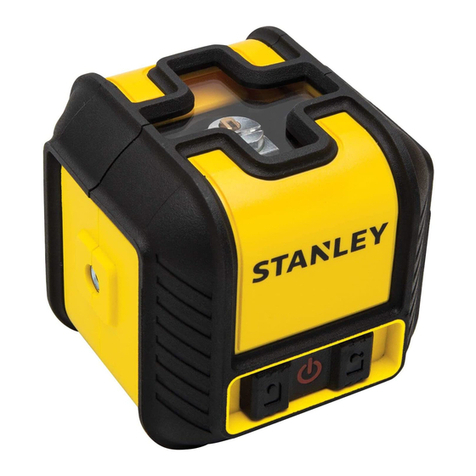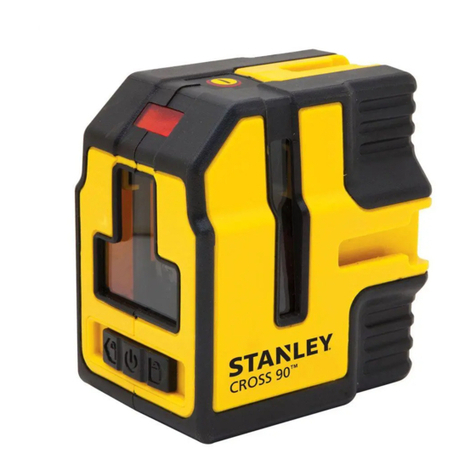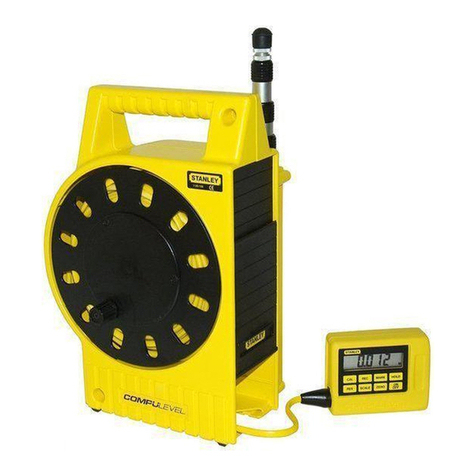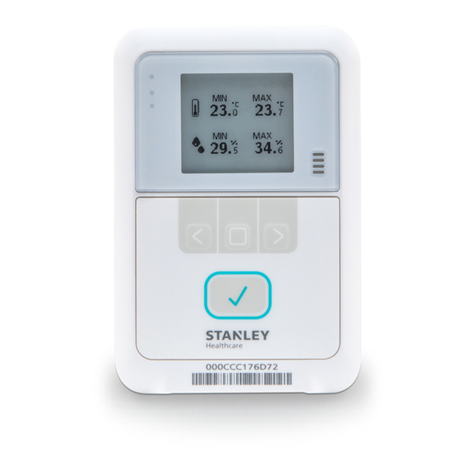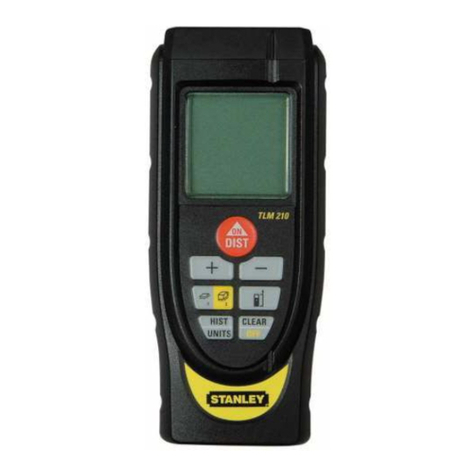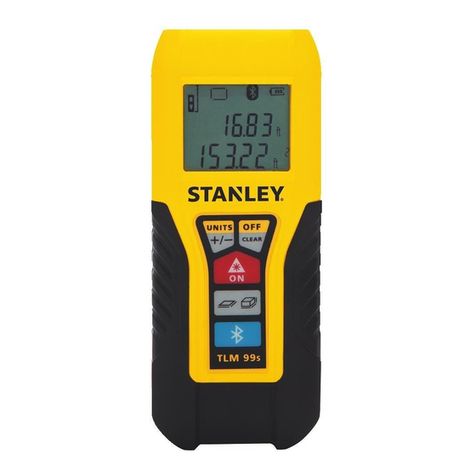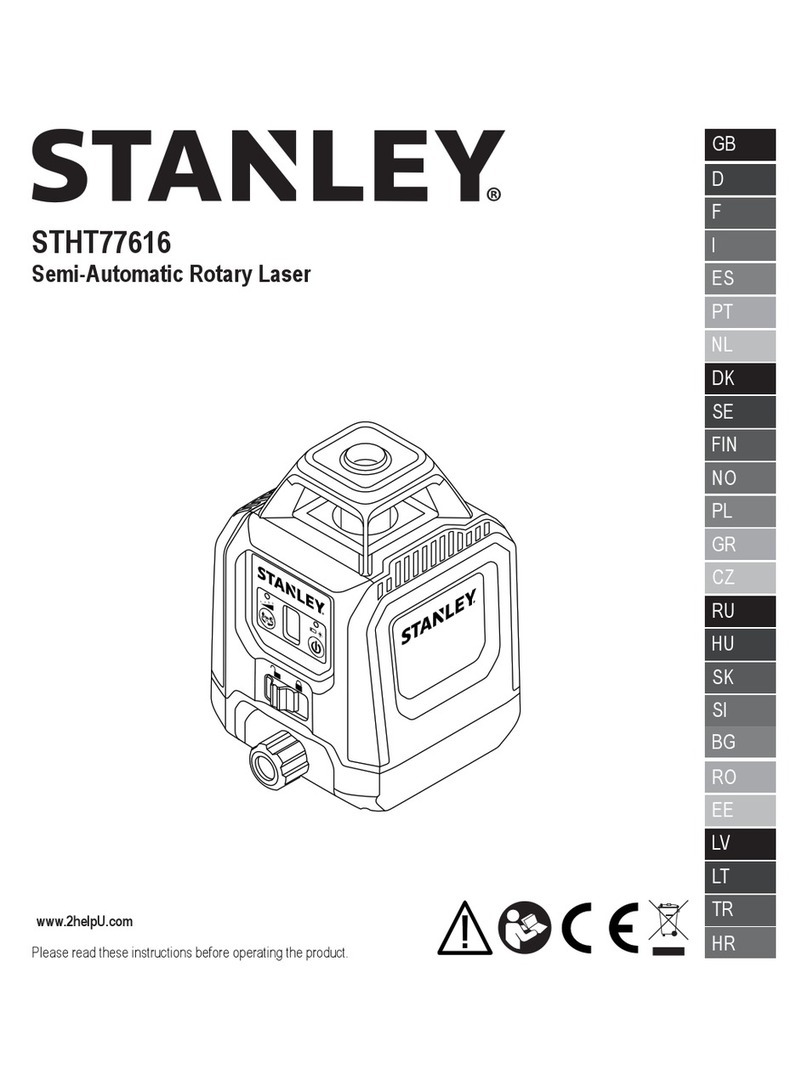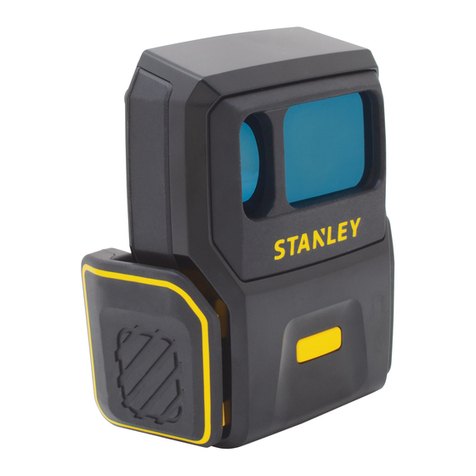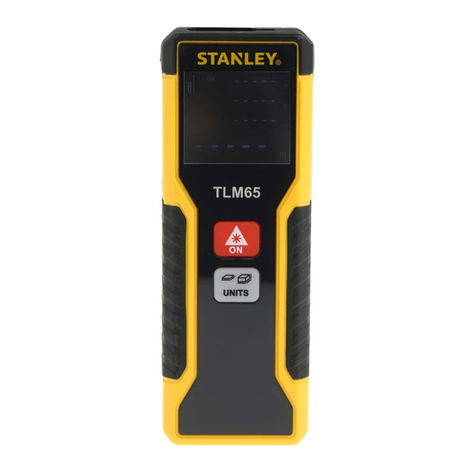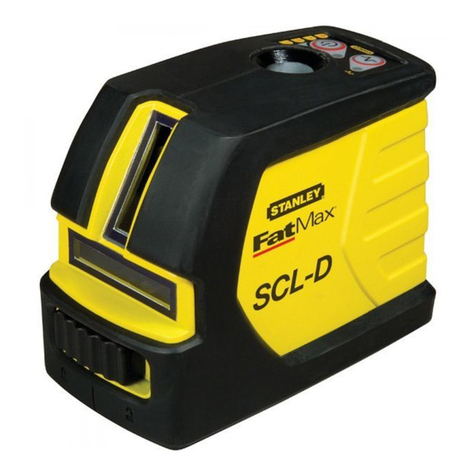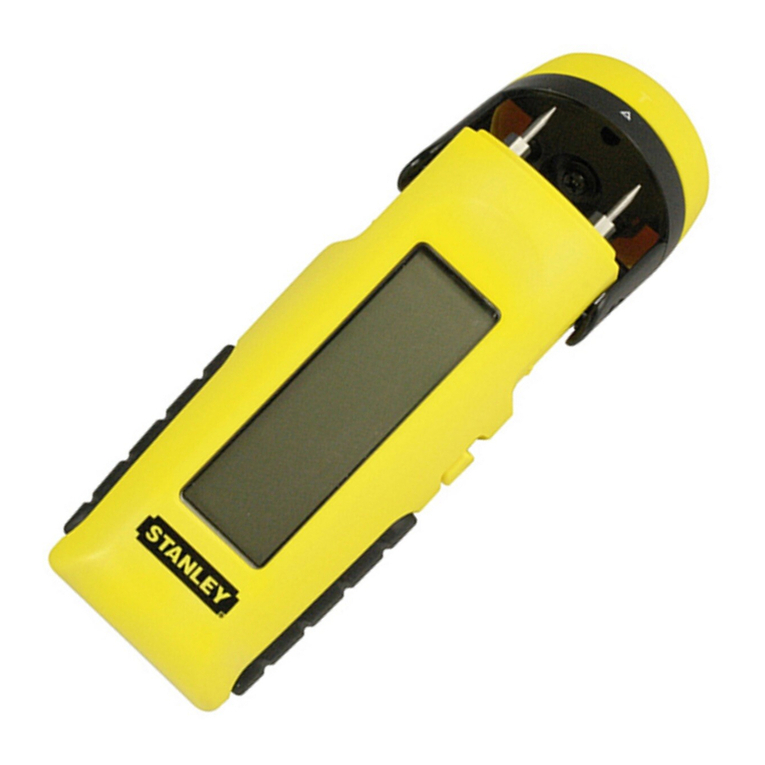
7
GB
6. Push the port cover back over the laser’s charging port.
Whenever the laser is not in use, slide the Power/Transport
Lock switch to the LEFT to the Locked/OFF position (Figure A
6) to save battery power.
Using the Mounting Block
On the bottom of the laser is a moveable block (Figure D).
• To use the magnets on the front of the laser (Figure A2) to
mount the laser against the side of a steel beam, do not
extend the moveable block (Figure D1). This will allow the
down dot to be aligned with the edge of the steel beam.
• To mount the laser over a point on the oor (using a multi-
function bracket or a tripod), pull out the moveable block until
it clicks in place (Figure D2). This will allow the laser down
dot to display through the 5/8-11 mounting hole and the laser
to be rotated over the 5/8-11 mounting hole without moving
the vertical position of the laser.
Turning the Laser On
1. Place the laser on a smooth, flat, level surface.
2. Slide the Power/Transport Lock switch to the right to the
Unlocked/ON position (Figure A7).
3. As shown in Figure A2, press once to display 3 dots
(above, ahead, and below the laser), and a second time to
display 2 additional dots to the right and left of the laser.
4. Check the laser beams. The laser is designed to self-level.
If the laser is tilted so much that it cannot self-level (> 4°),
the laser beams will continually flash twice and will flash
constantly on the keypad (Figure A3).
5. If the laser beams ash, the laser is not level (or plumb) and
should NOT BE USED for determining or marking level or
plumb. Try repositioning the laser on a level surface.
6. If ANY of the following statements are TRUE, continue with
the instructions for Checking Laser Accuracy BEFORE
USING THE LASER for a project.
• This is the first time you are using the laser (in case the
laser was exposed to extreme temperatures).
• The laser has not been checked for accuracy in a while.
• The laser may have been dropped.
Checking Laser Accuracy
The laser tools are sealed and calibrated at the factory. It
is recommended that you perform an accuracy check prior
to using the laser for the rst time (in case the laser was
exposed to extreme temperatures) and then regularly to ensure
the accuracy of your work. When performing any of the
accuracy checks listed in this manual, follow these guidelines:
• Use the largest area/distance possible, closest to the
operating distance. The greater the area/distance, the easier
to measure the accuracy of the laser.
• Place the laser on a smooth, at, stable surface that is level
in both directions.
• Mark the center of the laser beam.
Level Dot Accuracy - Level
Checking the level calibration of the laser unit requires two
parallel walls at least 20’ (6 m) apart.
1. Place the laser on a tripod and screw the threaded knob on
the tripod into the female thread on the laser.
2. Turn the laser ON and press twice to display dots
above, ahead, below, and to the right and left of the laser.
3. Place the laser 2”–3” (5–8 cm) from the rst wall. To test the
front laser dot, make sure the front of the laser is facing the
wall (Figure E1).
4. Mark the laser dot position on the rst wall as point P1
(Figure E1).
5. Turn the laser 180˚ and mark the laser dot position on the
second wall as point P2 (Figure E1).
6. Place the laser 2”–3” (5–8 cm) from the second wall. To test
the front laser dot, make sure the front of the laser is facing
the wall (Figure E2), and adjust the height of the laser
until the laser dot hits point P2.
7. Turn the laser 180˚ and aim the laser dot near point P1 on
the rst wall, and mark point P3 (Figure E2).
8. Measure the vertical distance between points P1 and P3 on
the rst wall.
